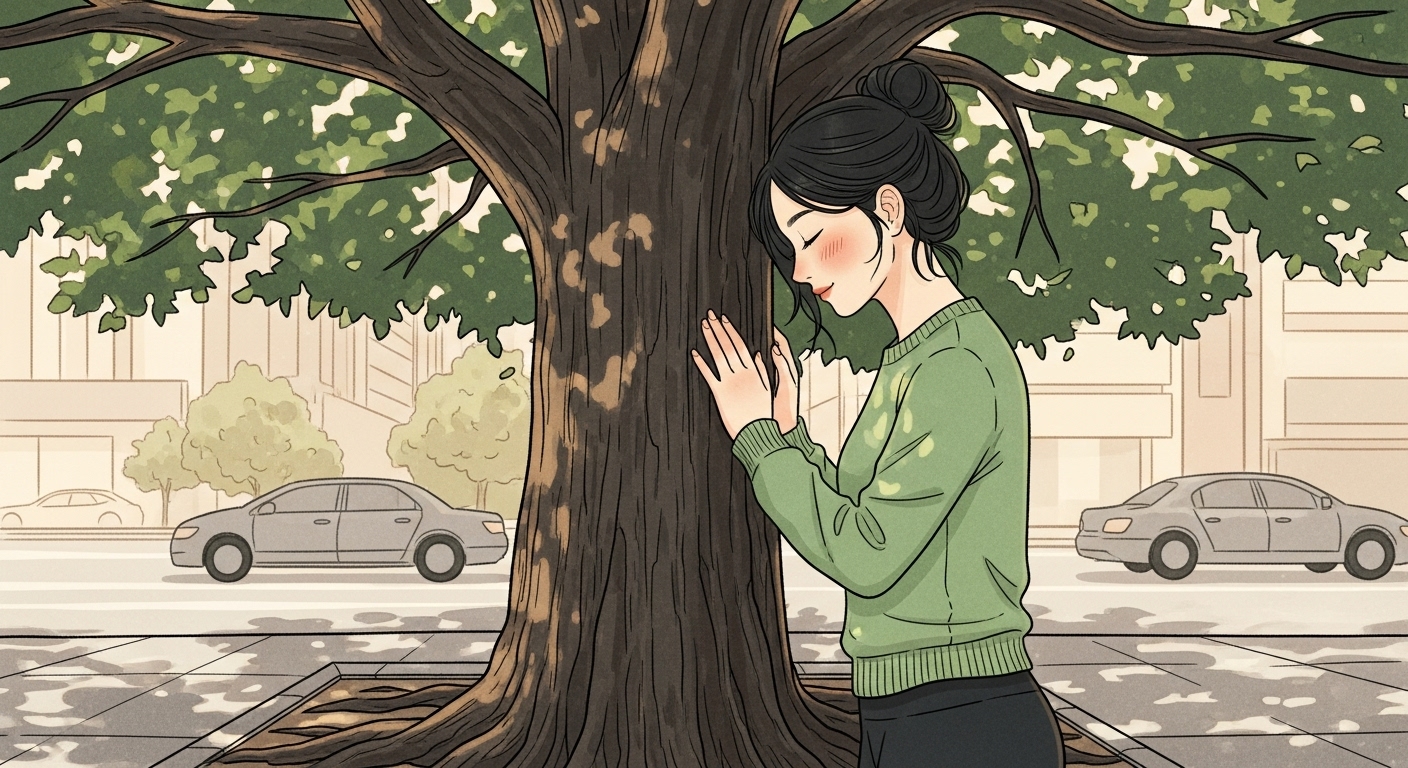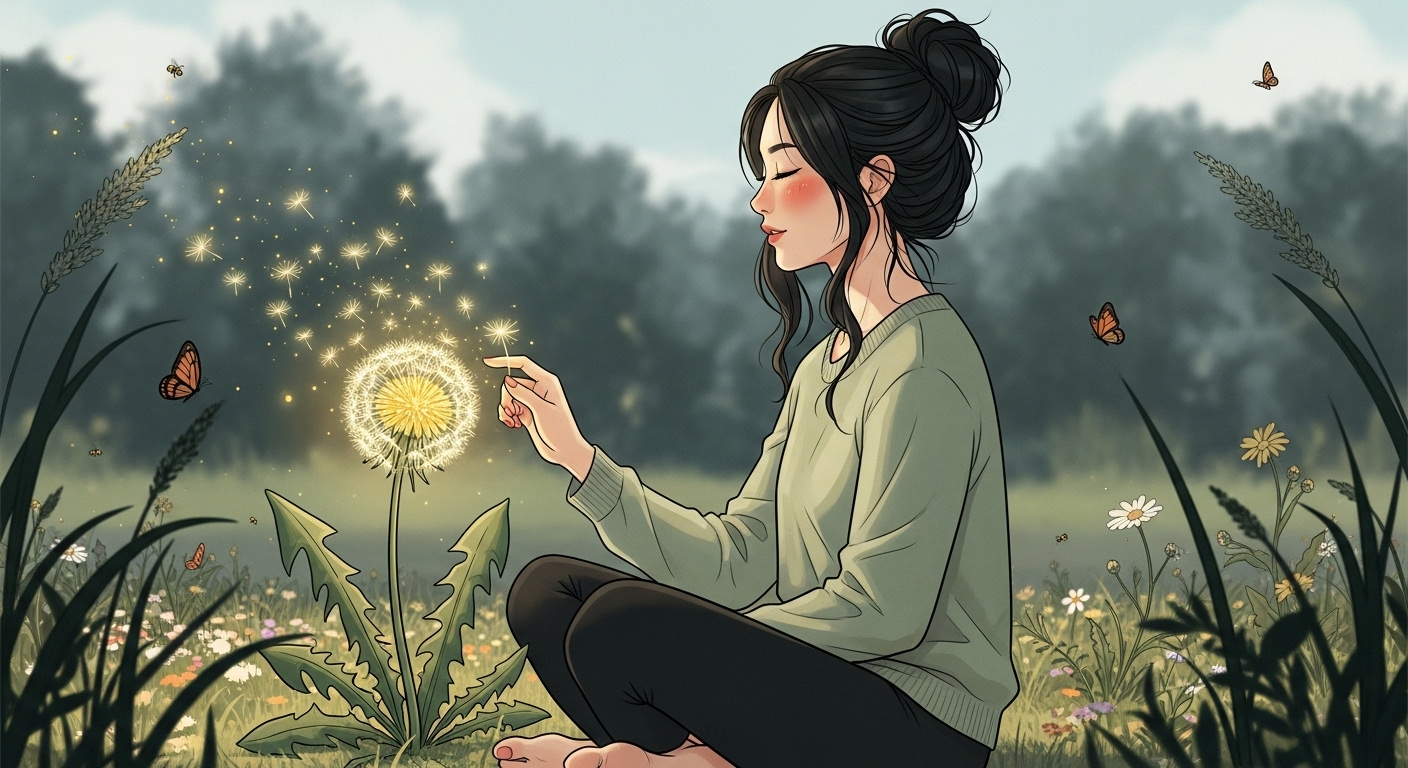Concrete Blooms Practice: Two Urban Nature Techniques for Resilient Living
Learn the Resilience Breathing technique and Crack-Finding Meditation that transform life's barriers into growth opportunities, inspired by the wisdom of urban plants.

After my parking lot epiphany with the dandelion, I spent weeks observing urban plants. Studying them. Learning their secrets. What I discovered was a complete resilience system hiding in plain sight.
These plants aren’t just surviving—they’re thriving using specific strategies we can adapt for our own lives. Today, I want to share two practices that channel this urban nature wisdom directly into your daily experience.
The Root System You Didn’t Know You Had
First, let’s talk about roots. Urban plants have incredible root systems. They’re not like their countryside cousins with plenty of room to spread. City roots have to be creative—wrapping around pipes, navigating through rubble, finding moisture in the strangest places.
Your resilience needs the same kind of creative root system. Not the kind that only works in perfect soil, but the kind that adapts to whatever ground you’re planted in.
Practice 1: Resilience Breathing (The Dandelion Method)
This breathing pattern mimics how plants interact with their environment—taking in what’s available and transforming it into life.
Find a comfortable position. You can do this anywhere—at your desk, on the subway, even walking down the street. Place one hand on your heart if that feels good. This is your bloom center.
The Pattern:
- Inhale for 4 counts (drawing up strength from your roots)
- Hold for 4 counts (letting that strength settle into your cells)
- Exhale for 6 counts (giving more than you take, like plants giving oxygen)
But here’s what makes this different from regular breathing exercises: you’re not trying to breathe perfectly. You’re breathing like an urban plant—making the most of what’s available.
Round 1: Foundation Breath As you inhale, imagine you’re drawing nutrients from whatever ground you’re on. Maybe it’s not ideal soil. Maybe it’s mostly concrete with a little dirt. That’s okay. Urban plants thrive on less than perfect. Draw in what’s there… 2… 3… 4.
Hold, letting that energy find where it needs to go… 2… 3… 4.
Exhale, releasing not just carbon dioxide but any rigidity… 2… 3… 4… 5… 6.
Round 2: Adaptation Breath This time, as you inhale, breathe in the actual quality of your current environment. Stressed? Breathe that in. Noisy? Include it. Uncomfortable? Welcome it. Like those plants that can metabolize pollution, you’re learning to transform whatever you’re given… 2… 3… 4.
Hold, feeling your body’s wisdom working with what it has… 2… 3… 4.
Exhale, releasing transformed energy back into your space… 2… 3… 4… 5… 6.
Round 3: Bloom Breath Final round. Inhale, drawing up all your dandelion determination… 2… 3… 4.
Hold, feeling that bright bloom energy in your chest… 2… 3… 4.
Exhale, sharing your particular beauty with the world… 2… 3… 4… 5… 6.
You’ve just practiced urban plant resilience. You didn’t need perfect conditions. You worked with what was here.
Practice 2: Crack-Finding Meditation
This is my favorite discovery from watching city plants. They don’t break through barriers—they find the openings that already exist. Every wall has a weakness. Every barrier has a gap. You just need to develop the sensitivity to find it.
Setting Up: Think of one area where you feel stuck. Maybe it’s a creative block, a relationship pattern, a career ceiling. Hold it lightly in your awareness—not gripping, just acknowledging.
Now, instead of staring at the barrier (which is what we usually do), you’re going to soften your focus. Like water seeking its level, like roots seeking moisture, you’re going to feel for the openings.
The Practice: Close your eyes or soften your gaze. Breathe naturally.
Imagine your awareness as root tips—sensitive, exploratory, patient. Let them explore the edges of your barrier. Not pushing, just feeling.
What do you notice? Maybe the barrier isn’t as solid as it seemed. Maybe there’s a corner that’s softer. Maybe there’s a place where someone else already made a tiny crack.
Urban plants are masters at finding these spaces. A seed can sense a hairline fracture in concrete and know: That’s my doorway.
Stay with this gentle exploration for a few minutes. You’re not trying to solve anything right now. You’re just developing your crack-finding sensitivity.
The Insight Moment: Often, what happens is surprising. The crack isn’t where you expected. The opening might be something like:
- A conversation you’ve been avoiding (that’s a crack)
- A skill you dismissed as irrelevant (another crack)
- A person who offered help you didn’t accept (crack)
- A small step you thought was “not enough” (big crack)
The Daily Urban Nature Practice
Here’s how I integrate these practices into city living:
Morning: Three rounds of Resilience Breathing before I even check my phone. Setting my root system for the day.
Commute: Crack-Finding awareness. Instead of seeing delays and crowds as solid barriers, I look for the openings. The empty seat that appears. The sudden clearing in foot traffic. The unexpected moment of quiet.
Work challenges: When I hit a wall, I don’t bang my head against it. I do one round of Resilience Breathing, then spend two minutes in Crack-Finding mode. There’s always another way. The dandelions taught me that.
Evening: Three more rounds of Resilience Breathing. Reviewing the day not for what blocked me, but for where I found openings, where I grew despite conditions.
Your Urban Nature Wisdom
Remember: Every plant in the city is a resilience teacher. That scraggly tree on your block? It’s showing you how to stand tall despite difficult conditions. The moss on the shady side of buildings? It’s teaching you to thrive without spotlight. The weeds in the abandoned lot? They’re demonstrating how to create beauty in forgotten spaces.
You don’t need to escape the city to find nature’s wisdom. You need to recognize that you ARE urban nature—adaptive, creative, and capable of blooming anywhere.
Tomorrow, try this: Choose one urban plant you pass regularly. Before you practice these techniques, spend thirty seconds just observing it. Notice how it’s grown. See where it found its opportunities. Let it remind you: if this little plant can bloom here, so can you.
Next in this series: How your personal resilience creates an ecosystem of possibility for others, and why the future of human flourishing might look more like an urban wildflower meadow than a manicured garden.



